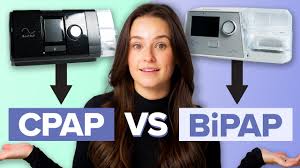When it comes to treating sleep apnea, two common therapies often come up: CPAP (Continuous Positive Airway Pressure) and BiPAP (Bilevel Positive Airway Pressure). While both help keep your airway open during sleep, they work differently — and choosing the right one can make a big difference in your comfort and treatment success.
This video breaks down the key differences between CPAP and BiPAP machines, helping you understand how each therapy works and which might be the right fit for you.
✅ Key Takeaways from the Video:
-
CPAP Therapy:
-
Delivers a constant, steady pressure of air to keep the airway open.
-
Commonly prescribed for obstructive sleep apnea.
-
Works best for mild to moderate cases.
-
-
BiPAP Therapy:
-
Provides two levels of pressure: higher for inhalation, lower for exhalation.
-
Often used for more severe sleep apnea, COPD, or patients who have trouble exhaling against CPAP pressure.
-
Offers advanced comfort for specific medical needs.
-
✅ Which Therapy Is Right for You?
-
CPAP: Ideal for most people with obstructive sleep apnea looking for effective, simple treatment.
-
BiPAP: Recommended for patients with higher pressure needs, central sleep apnea, or certain respiratory conditions.
Always consult with a sleep specialist before making a decision.



